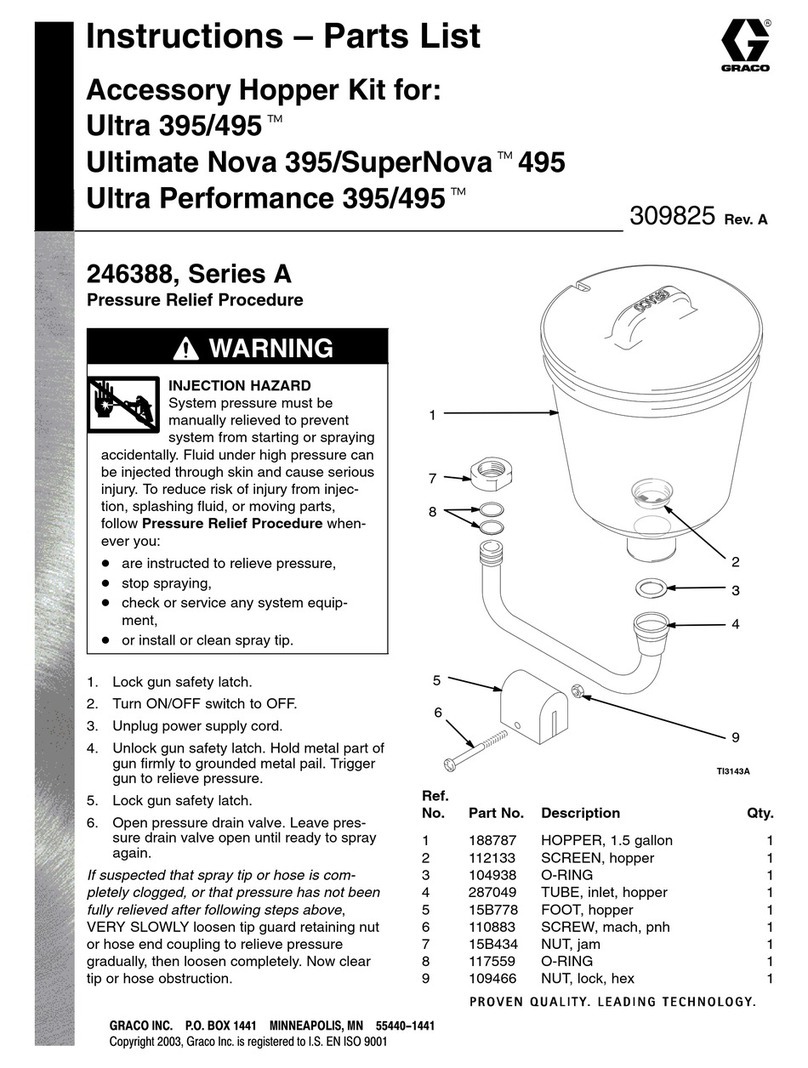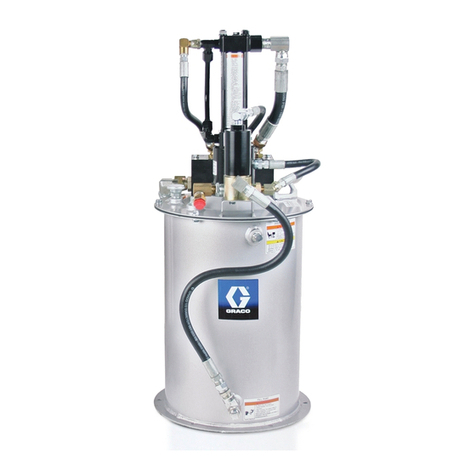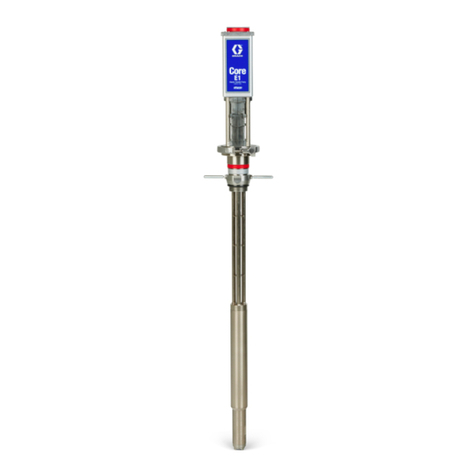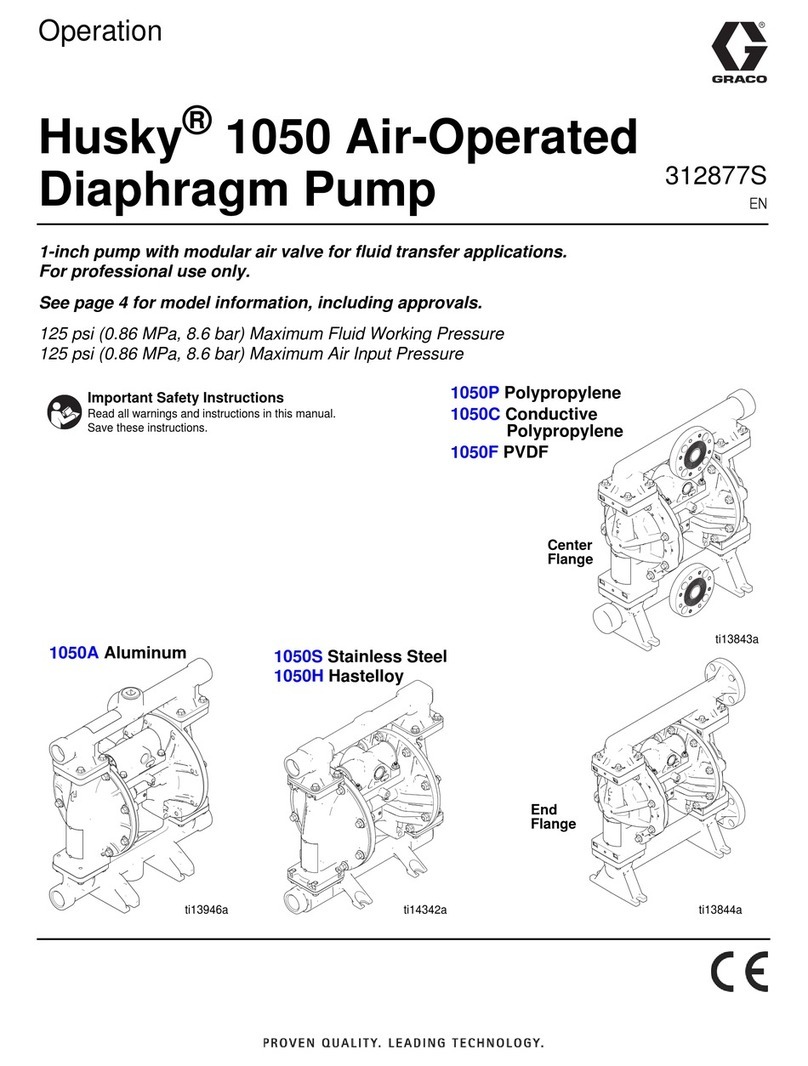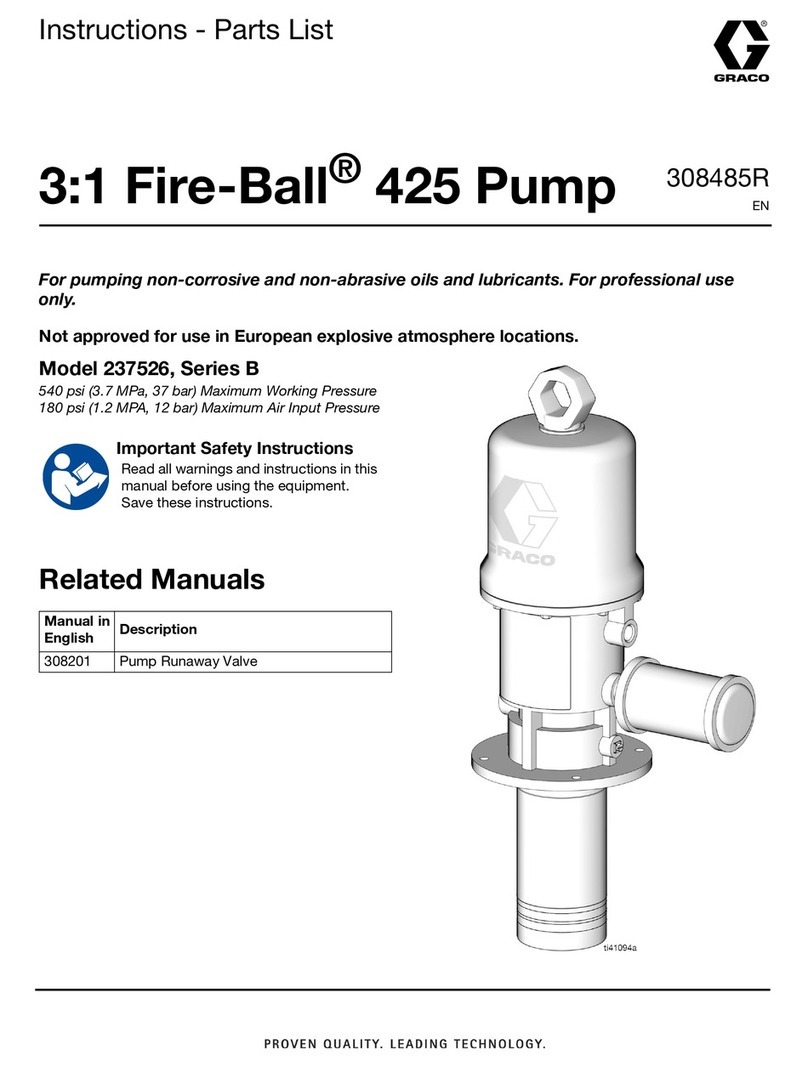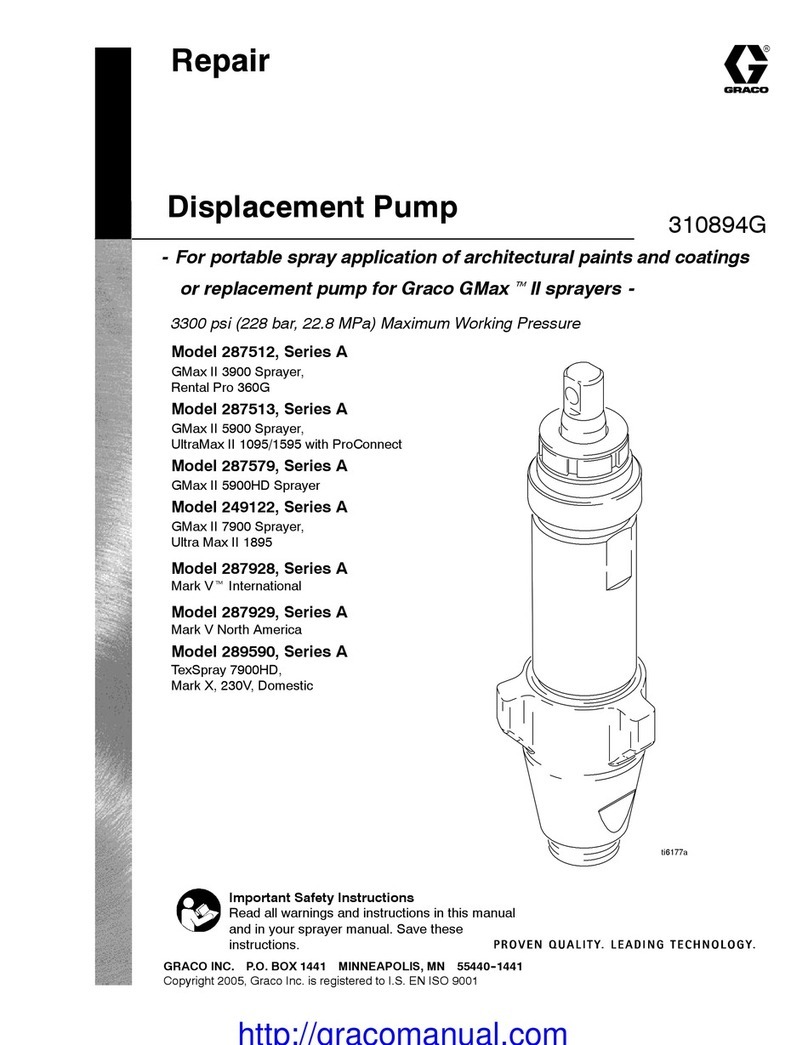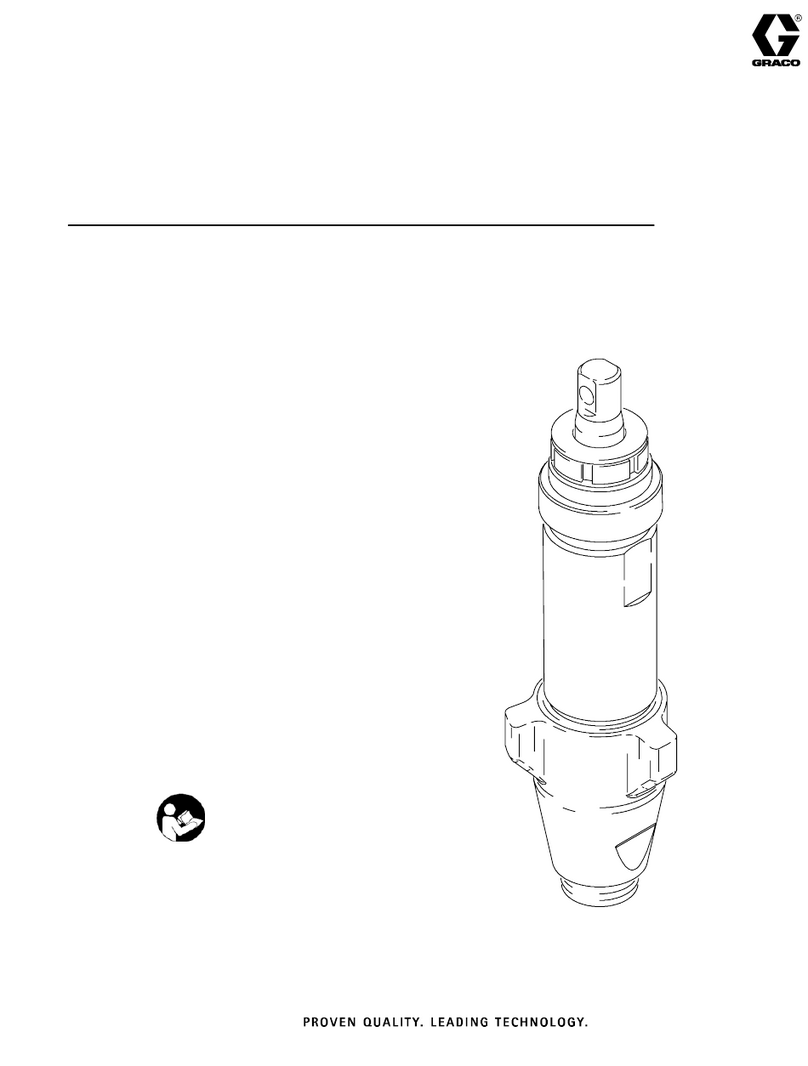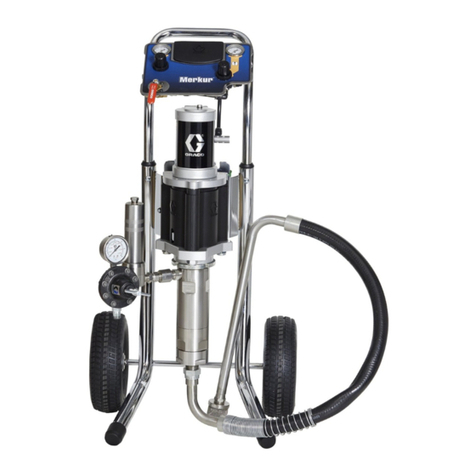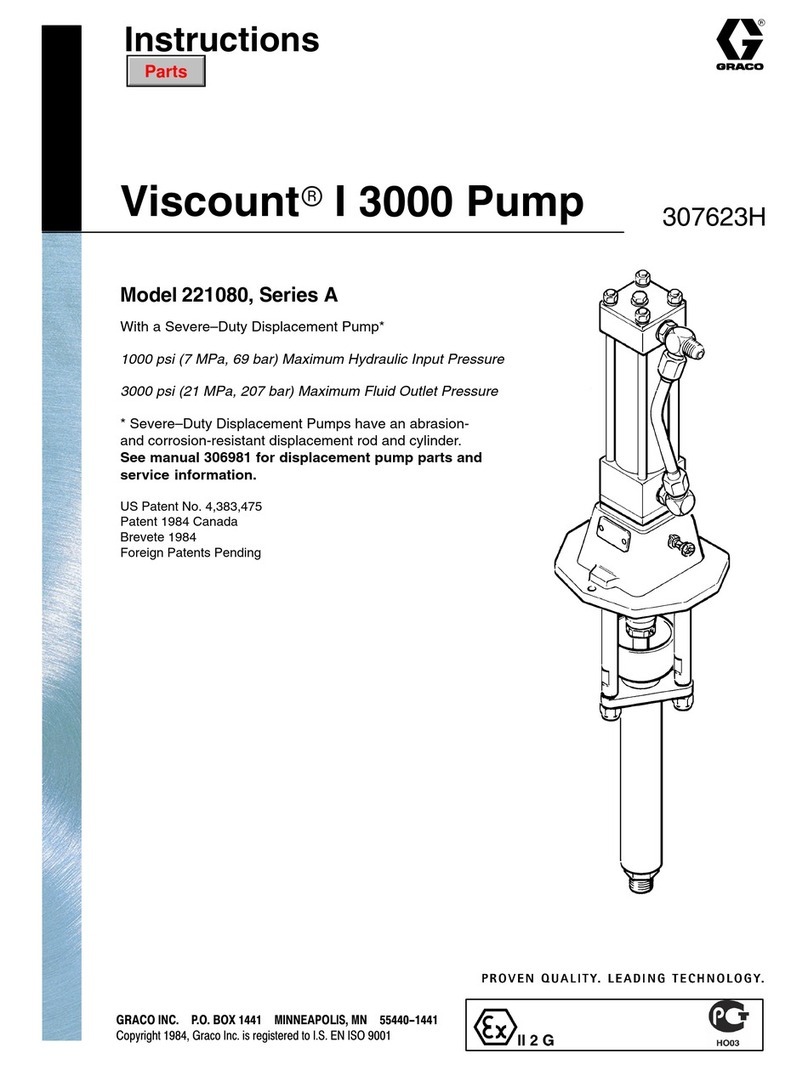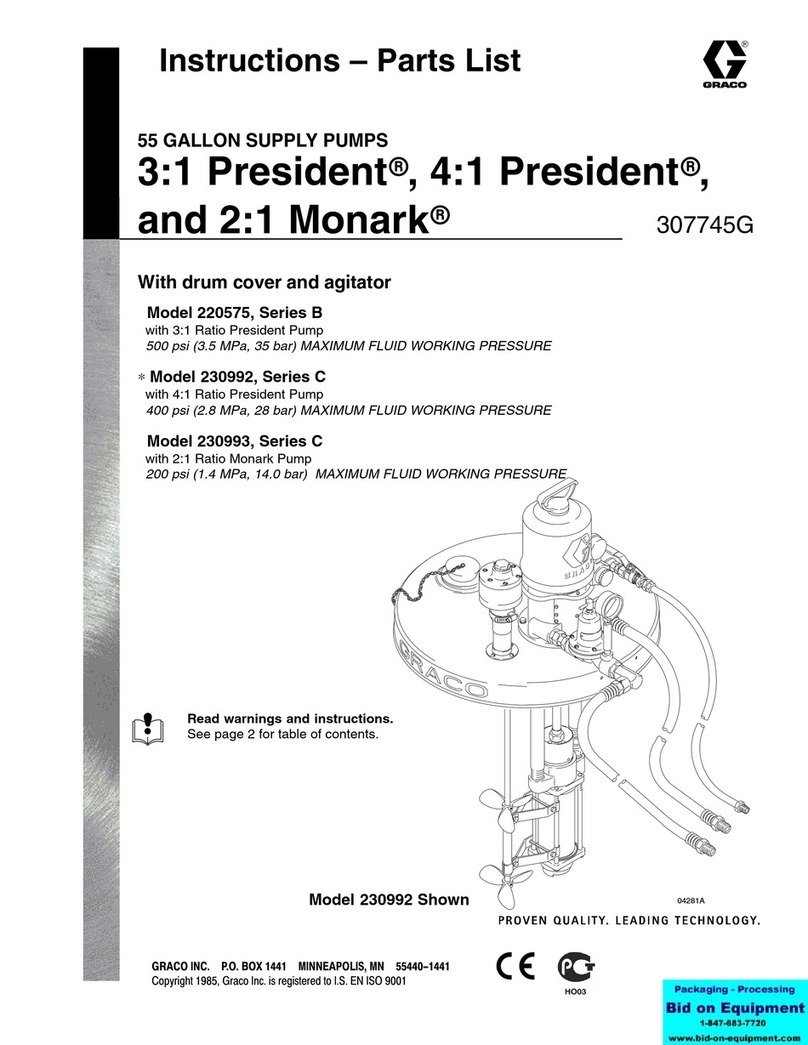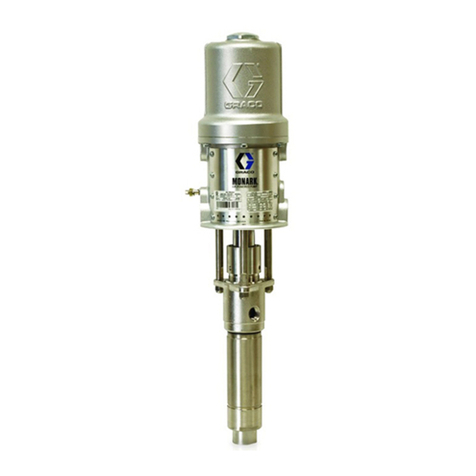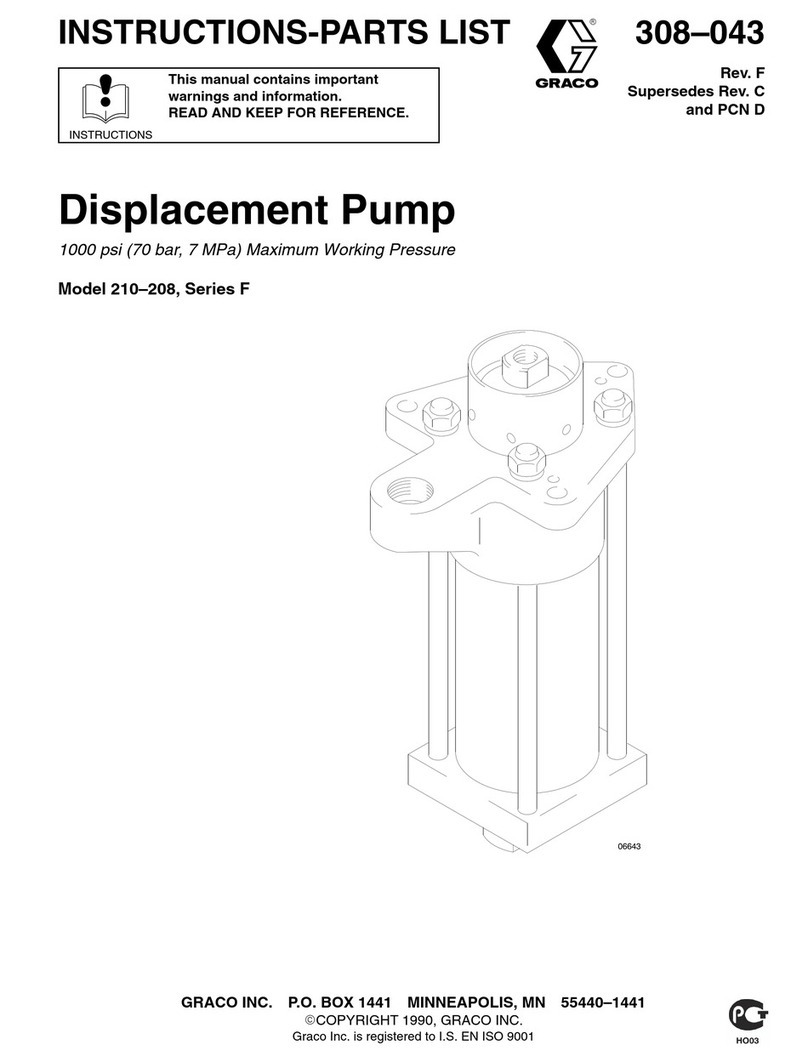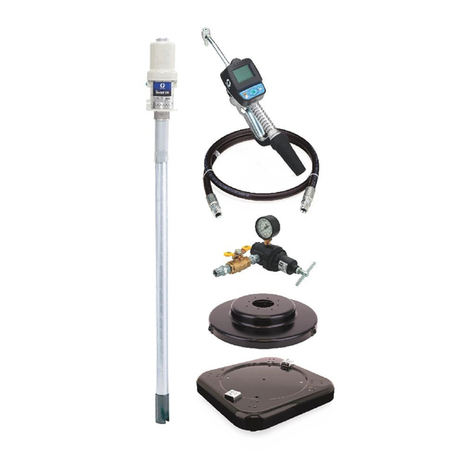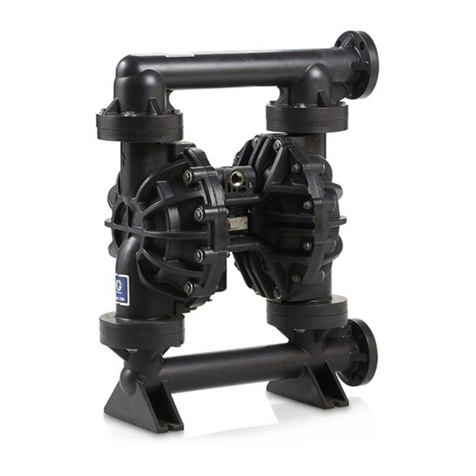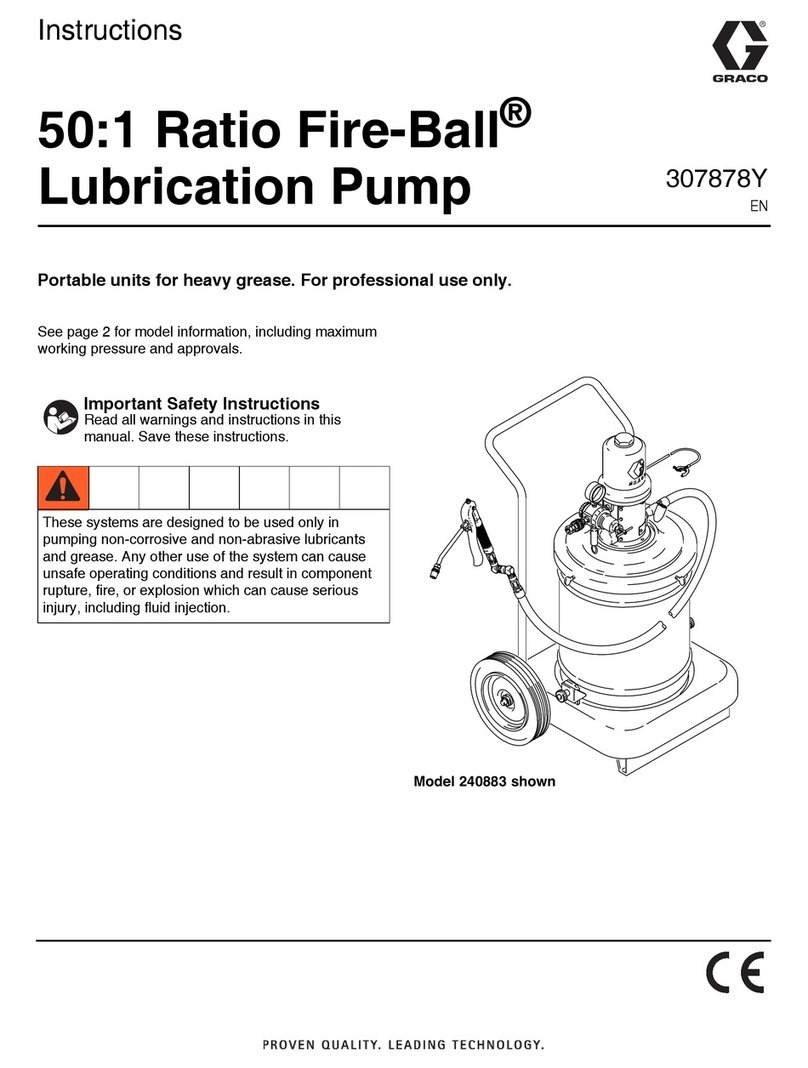
EQUIPMENT MISUSE HAZARD
General
Safety
Any
misuse of the spray/dispensing equipment or accesso
-
ries, such as overpressurizing, modifying parts, using incom
-
patible chemicals and fluids, or using worn or damaged parts,
can cause them to rupture and result in fluid injection, splash
-
ing in the eyes or on the skin, or other serious bodily injury
, or
fire, explosion or property damage.
Never alter or modify any part of this equipment; doing so
could cause it to malfunction.
Check all spray/dispensing equipment regularly and repair or
replace worn or damaged parts immediately
.
Always wear protective eyewear
, gloves, clothing and respi
-
rator as recommended by the fluid and solvent manufacturer
.
System
Pressure
The
maximum safe working pressure is determined by the air
or hydraulic motor. Do not exceed the maximum working
pressure stated on your complete pump.
Be sure that all spray equipment
and accessories are rated to
withstand the maximum working pressure of the pump. Do
not exceed the maximum working pressure of any compo
-
nent or accessory used in the system.
Fluid
Compatibility
Be
sure that all fluids and solvents used are chemically com
-
patible with the wetted parts shown in the
T
echnical Data
on
the back cover
. Always read the manufacturer
’
s literature
before using fluid or solvent in this pump.
FIRE
OR EXPLOSION
HAZARD
Static
electricity is created by the high velocity flow of fluid
through the pump and hose. If every part of the spray/dis
-
pensing equipment is not properly grounded, sparking may
occur
, and the system may become hazardous. Sparking
may also occur when plugging in or unplugging a power sup
-
ply cord. Sparks can ignite fumes from solvents and the fluid
being sprayed/dispensed, dust particles and other flammable
substances, whether you are spraying/dispensing indoors or
outdoors, and can cause a fire or explosion and serious bod
-
ily injury and property damage. Do not plug in or unplug any
power supply cords in the spray/dispensing area when there
is any chance of igniting fumes still in the air
.
If you experience any static sparking or even a slight shock
while using this equipment,
stop spraying/dispensing im
-
mediately.
Check the entire system for proper grounding. Do
not use the system again until the problem has been identi
-
fied and corrected.
Grounding
T
o reduce the risk of static sparking, ground the pump and all
other spray/dispensing equipment used or located in the
spray/dispensing area. Check your local electrical code for
detailed grounding instructions for your area and type of
equipment. Be sure to ground all of this spray/dispensing
equipment:
1.
Pump:
Ground the complete pump as indicated in your
separate pump instruction manual.
2.
Air or hydraulic hoses:
use only grounded hoses.
3.
Fluid hoses:
use only grounded fluid hoses.
4.
Air compressor or hydraulic supply:
follow manufactur
-
er’
s recommendations.
5.
Spray gun/dispensing valve:
grounding is obtained
through connection to a properly grounded fluid hose
and pump.
6.
Fluid supply container:
according to your local code.
7.
Object being sprayed:
according to your local code.
8.
All solvent pails used when flushing,
according to your
local code. Use only metal pails, which are conductive,
placed on a grounded surface. Do not place the pail on a
nonconductive surface, such as paper or cardboard,
which interrupts the grounding continuity
.
9.
T
o maintain grounding continuity when flushing or reliev
-
ing pressure
, always hold a metal part of the spray gun/
dispensing valve firmly to the side of a grounded
metal
pail, then trigger the spray gun/dispensing valve.
Flushing
Safety
Before
flushing, be sure the entire system and flushing pails
are properly grounded. Refer to
Grounding
, at the left.
Follow the
Pressure Relief Procedure
on page 2, and
remove the spray tip/nozzle from the spray gun/dispensing
valve. Always use the lowest possible fluid pressure, and
maintain firm metal-to-metal contact between the spray
gun/dispensing valve and the pail during flushing to reduce
the risk of fluid injection injury
, static sparking and splashing.
MOVING
P
ARTS HAZARD
Moving
parts can pinch or amputate your fingers or other
body parts. In air-powered systems, the air motor piston (lo
-
cated behind the air motor shield) moves when air is supplied
to the motor
. Therefore, never operate the pump with the air
motor
shield removed. Keep clear of moving
parts when start
-
ing
or operating the pump. Before checking or servicing the
pump, follow the
Pressure Relief Procedure
on page 2 to
prevent the pump from starting accidentally
.
